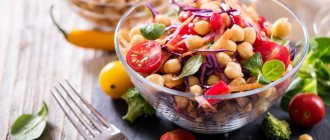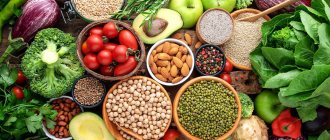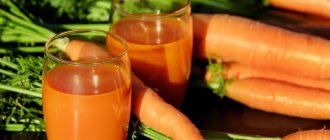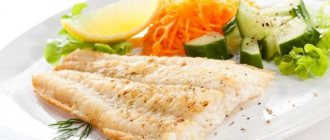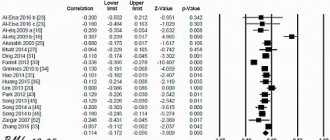Medicine has long known that the characteristics of the body depend on genetics. In particular, a factor such as blood type, which is given to a person from birth, genetically, largely determines the most suitable lifestyle, including diet.
American scientist Peter D'Adamo proposed his own nutritional system, depending on blood type. Medical scientists are still arguing about the correctness of this theory. Existing scientific research cannot yet confirm the effectiveness of the D'Adamo nutrition system.
In one large study , 1,455 adults ate according to the recommendations for blood type 1, and it actually had a positive effect on their health. But this effect was observed in people with all blood types, not just the first.
The improvement in health was likely due to the fact that the participants simply began to eat healthier foods than before. After all, regardless of blood type, the D'Adamo method emphasizes natural and healthy foods, as opposed to the so-called “Western diet” consisting of refined sugar, fast food and trans fats.
Another large-scale review study from 2013 also did not confirm the effectiveness of this nutrition system.
However, those who practice this diet in accordance with the recommendations of nutritionists claim that their health, mood and general condition have significantly improved. Obviously, if a person feels better from a certain nutritional system, then it is worth continuing to adhere to it.
In this article we will discuss in detail the features of the diet for people with the third blood group, both positive and negative Rh factor.
Principles and rules of the diet for 3 positive blood group
The blood type diet (3 positive) for weight loss is based on the consumption of foods of a certain category. According to the theory, the ancestors of people with B(III)Rh+ were nomads, so the diet of carriers may contain products of completely different categories. Patients with positive blood group 3 are characterized by stable immunity: they quickly adapt to new climatic conditions.
It must be remembered that people with B(III)Rh+ are often prone to overeating. They suffer from chronic fatigue and are susceptible to:
- pathologies of the central nervous system;
- autoimmune diseases;
- pathologies of viral etiology.
Patients with positive blood type 3 have a high risk of developing diabetes mellitus, so during the diet you should try to completely exclude sweets containing sweeteners from the diet.
Compliance with the basic rules of the methodology is mandatory. These include:
- regular calorie counting (women 1600 kcal, men 2000 kcal);
- complete rejection of fried, salty, sour and spicy foods;
- eating raw vegetables (cooking them is not recommended);
- compliance with the drinking regime (per day - at least 1.5 liters);
- the presence in the diet of foods that can speed up metabolism (greens, dairy products);
- presence of physical activity.
When consuming foods high in calories, it is necessary to increase physical activity. In this case, the minimum daily volume of liquid should be 2 liters.
A healthy eating system involves partial avoidance of foods that contribute to:
- weight gain;
- decrease in insulin levels;
- slowing down metabolic processes.
It is not recommended to include nuts and corn grains in your diet. They promote fluid retention in the body. The diet cannot be considered a rapid weight loss system. It is rather a healthy eating technique.
Distinctive features of people with group 3
Only 8 to 20% of the planet's population has the third blood group; these are the descendants of former nomadic peoples. Their gastrointestinal tract works well and they easily adapt to changing living conditions. Therefore, they tolerate stressful situations quite easily and can eat almost anything.
Eating in accordance with their genetic characteristics, people with blood type 3 rarely get viral infections. They tolerate stressful situations well and are not prone to depression. But they should combine nutritious food with lots of physical activity .
If the blood diet is violated, owners of this type of blood are prone to diseases such as:
- multiple sclerosis;
- diabetes mellitus type I;
- chronic fatigue syndrome.
Advantages and disadvantages
The technique has a number of advantages and disadvantages. The advantages include:
- uniform, gradual weight loss, which helps prevent the appearance of stretch marks and sagging skin;
- a lasting effect is ensured by restoring metabolic processes, so the diet is considered not only safe, but also a healthy nutritional system;
- an extensive list of permitted products, which allows you to create the most varied menu.
The disadvantage is considered to be the need for responsibility and discipline when preparing a diet. Also, the disadvantages include possible contraindications.
conclusions
The diet for the third positive blood group is one of the easiest and healthiest. If there are no clinical contraindications, you can safely follow it. It does not cause such harm as mono-diets. There is no need to frantically count calories.
Those who are losing weight begin to follow a new diet, wanting to get a slim body, and as a result they get healthy internal organs, harmony, energy and an attractive appearance.
Reader’s story “How I lost 18 kg in 2.5 months” I’ve been fat all my life and suffered from excess weight. In clothing stores I chose size L, which by the age of 25 turned into XL and continued to grow. I can tell you for a long time how I tried to fight my 30-35 extra pounds: diets, hunger strike, physical activity, even pills and some kind of conspiracies. The effect was short-lived or absent altogether. In short, despair, depression and almost resignation to one’s enormous weight. But one day I came across... a chocolate bar that helps you lose weight! It didn’t cost me anything to try it - I love chocolates. I ordered it and ate it. And the weight crept down!! It seems like mysticism, but it's true. I began to study the issue and realized how it all works. Girls, try it! I have already lost 18 kg in 2.5 months. And I continue. It's up to you, but you don't lose anything except weight, of course. Try Choco Burn chocolate for weight loss for 147 rubles.
Features for children, elderly, pregnant women
The blood type diet (3 positive) for weight loss requires caution. It can be followed by pregnant women, elderly patients and teenagers. It is important to make your diet as balanced as possible in order to be able to control weight gain during pregnancy.
It is also necessary to pay attention to the quality of the products. During the diet, pregnant women are prescribed to consume seasonal fruits, vegetables and mineral complexes.
The preparations must contain:
- magnesium;
- folic acid;
- iron;
- calcium;
- iodine.
The emphasis should be on foods containing large amounts of dietary fiber. They stabilize intestinal function. In addition to counting calories, it is necessary to find out the ratio of proteins, fats and carbohydrates in each dish. To prevent swelling, a woman should drink 1.5 liters of fluid per day.
The diet will be useful for teenagers prone to excess weight. The method does not imply strict restrictions; the child can eat all foods from the list of permitted foods, but in small quantities. The diet should contain lean meat, fish, dairy products, fresh fruits and vegetables.
Elderly patients may require slight menu adjustments. The first and second courses are prepared with the addition of cereals in a weak chicken or vegetable broth. To enhance the fat burning process, soups, salads and casseroles can be omitted.
The essence
A person's blood group (according to the international ABO system, there are four in total) is determined by the A and B antigens found on red blood cells. In the blood of group O (I) there are no antigens, in A (II) there is only antigen A, in B (III) there is only antigen B, in the blood of group AB (IV) both antigens are contained. James D'Adamo argued that the human body absorbs better and does not store as fat reserves the food consumed by his ancestors with the same blood type.
Since the author of the diet believed that blood group III was formed during the period of intercontinental migrations, its carriers were both hunters, that is, meat-eaters, and vegetarians who prefer plant foods. These people had strong immunity and a good digestive system. Based on this judgment, a person with a given blood type can eat almost any food without harm to the body, with a few exceptions. D'Adamo's nutrition system divides all foods into permitted and prohibited. A complete table of products by category is provided below.
| Allowed | Prohibited |
| Meat, poultry, eggs | |
| Beef, lamb, rabbit, horse meat, offal, turkey, lard, ham. | Pork, sausages, poultry. |
| Cereals | |
| Oat bread, rice, pasta, spelled wheat, bulgur, semolina. | Barley, buckwheat, pearl barley, corn cereals, muesli. |
| Seafood | |
| Low-fat types of river and sea fish, squid. | Fatty fish, canned fish and caviar, shrimp, seaweed. |
| Dairy | |
| Low-fat milk and fermented milk products, cottage cheese, feta cheese, goat cheese. | Ice cream, almond and soy milk. |
| Vegetables and legumes | |
| Any type of cabbage, watercress, lettuce, carrots, bell peppers, soybeans, chickpeas, zucchini, cucumbers, celery, beets, mushrooms, onions. | Tomatoes, radishes and radishes, pumpkin, rhubarb, olives, lentils. |
| Fruits, berries | |
| Any types except those prohibited. | Peach, nectarine, persimmon, avocado, fig. |
| Nuts and seeds | |
| Poppy seeds, hazelnuts (hazelnuts), almonds and walnuts, sesame and flaxseeds. | Peanuts, pistachios, sunflower and pumpkin seeds. |
Good to know. Father and son D'Adamo wrote in their writings that the blood type 3 diet is the easiest of all. People with blood type 3 are often forced to resort to weight loss diets due to their addiction to fried meat and sweet foods, especially chocolate. Refusal of such products serves as the main test for them.
What is included in the diet?
The food basket during the blood group 3 diet is quite varied. The menu may contain dairy and meat products, cereals, eggs, lean fish, mushrooms, vegetables, fruits and legumes. When losing weight, it is not recommended to abuse the meat and eggs of waterfowl, fish caviar, mollusks and crustaceans. The amount of seeds and nuts previously consumed should be reduced.
Cereals can be consumed, but in small quantities. Experts advise abandoning ready-made sauces, replacing them with spices. You can add fresh herbs to first and second courses, salads and appetizers. For dressing use oil and lemon juice. During the diet, the patient can drink a little white or red wine. According to reviews, the body quickly gets used to the new regime, so side effects rarely occur.
List of approved products
The blood type (3 positive) diet for weight loss includes almost all types of meat. The basis of the diet is fresh vegetables and fruits.
Dishes can be prepared with the addition of spices:
- horseradish;
- curry;
- cayenne pepper.
During the diet, you can eat venison, rabbit and lamb, and beef liver.
The list of permitted seafood and fish includes:
- black caviar;
- flounder;
- salmon;
- hake;
- cod;
- halibut;
- pike;
- sardines;
- sea bass;
- haddock;
- sturgeon;
- mackerel.
2-3 times a week you can eat 1 boiled egg for breakfast or lunch.
Permitted products include grain crops and products made from them:
- oats;
- millet;
- rice;
- rice cakes;
- millet bread;
- rice or grain breads.
The presence of dairy products in the diet is mandatory. During the diet you can eat:
- yogurt;
- kefir;
- homemade cheese and cottage cheese;
- goat or sheep milk cheese;
- skim cow's or goat's milk.
Legumes (lima beans, black beans, red soybeans) are added to main courses.
The list of permitted vegetables and herbs includes:
- hot pepper;
- beet leaves;
- parsnip;
- parsley;
- eggplant;
- sweet potato;
- beet;
- green, yellow bell pepper;
- Chinese cabbage, red cabbage, collard cabbage, broccoli, cauliflower, white cabbage, Brussels sprouts.
It is acceptable to eat plums, pineapples, papaya, bananas, cranberries and grapes. Freshly squeezed juices may also be present in the diet.
Neutral foods do not have any effect on the digestive process. The diet may include:
- meat products (beef, veal, turkey, pheasant);
- seafood and fish (scallops, squid, herring, catfish, steak, croaker, yellow and silver perch, rainbow trout, tuna, carp);
- nuts (chestnuts, hazelnuts, pine and walnuts, almonds, pecans);
- grain products (oat bran, soy, rye, spelled bread);
- dairy products (hard cheese, butter, whey, cow's milk);
- oil (linseed, olive);
- vegetables and herbs (celery, ginger, daikon, fennel, horseradish, garlic, onion, red, onion, leek, shallot, potato, asparagus, turnip, pumpkin, zucchini, rutabaga, dill);
- berries and fruits (figs, kiwi, mangoes, peaches, apricots, raspberries, strawberries, strawberries, blackberries, currants, pears, apples, blueberries, cherries, lingonberries, melon, watermelon, lemon, grapefruit, orange, tangerine).
Dried fruits may be present in the diet. The consumption of prunes, dried apricots, raisins and dates is allowed in small quantities.
List of prohibited products
It is necessary to exclude from the diet:
- meat and meat products (quail, partridge, duck, chicken, pork);
- fish and seafood (clams, octopus, crabs, crayfish, snails, anchovies, lobsters, beluga, rock bass, eel, sea pike).
You should not eat blue or processed cheese. You need to completely give up ice cream. Cereals (shiritsa, corn, rye, barley, wheat) and products made from them (rye, wheat bread) are also prohibited.
Do not consume sesame, sunflower, peanut, corn and cottonseed oil. The list of prohibited products also includes:
- spices (barley, malt, almond extract, white and black pepper, corn starch, cinnamon, gelatin, allspice);
- fruits (starfruit, pomegranate, coconut, persimmon);
- ready-made sauces (mayonnaise, cream, garlic, tartar, mushroom, cheese, sour cream, bechamel);
- vegetables (rhubarb, olives, tomatoes, soybeans, pepo pumpkin, Jerusalem artichoke, artichokes, avocado);
- legumes (lentils, radiata, spotted beans, lamb and cow peas, black beans).
You need to give up sesame seeds, peanuts, cashews, flax seeds and sunflowers.
Drinking regime
The blood type diet (3 positive) for weight loss requires compliance with the drinking regime. In the process of losing weight, water plays an important role: when fluid enters the body, a signal is sent to the brain centers responsible for hunger and thirst, and the person temporarily stops feeling hungry. With a lack of moisture, the risk of dehydration is quite high. The condition negatively affects the patient’s well-being: he complains of fatigue and dizziness.
Most metabolic processes take place in an aquatic environment. Non-carbonated mineral water accelerates the process of breaking down food, converting carbohydrates into energy. If you follow a drinking regime, there is an accelerated production of hormones responsible for the release of fat cells from the subcutaneous layer. Water also provides nutrition to cells, carrying minerals, trace elements and vitamins to internal organs.
During the diet, the following drinks are allowed:
- beer;
- white, red wine;
- apricot, citrus, vegetable juices;
- black tea, decaffeinated coffee.
You can drink infusions and decoctions based on:
- dandelion;
- St. John's wort;
- alfalfa;
- strawberry leaves;
- valerian;
- thyme;
- verbena;
- chamomile;
- echinacea;
- hawthorn;
- yarrow;
- elderberries.
Also, while losing weight, you can take decoctions based on rose hips, ginseng, sage, licorice root and peppermint. Juices are prepared from cabbage, grapes, papaya, pineapple and cranberries.
The list of prohibited drinks includes:
- tomato juice;
- infusion based on hops, aloe, fenugreek, red clover, coltsfoot, linden, senna, corn silk.
With sufficient fluid intake into the body, the process of removing waste, toxins and salts occurs faster. It is strictly forbidden to drink strong alcoholic drinks (vodka, cognac, brandy, absinthe, moonshine, fortified wines).
Product table
You can briefly familiarize yourself with healthy, unhealthy and neutral foods in the table:
Allowed
With this type of blood you can eat without any health risks:
- any fish and seafood, mackerel, sardines, flounder, cod, salmon are especially useful;
- from meat - lamb, rabbit, medium-rare or stewed;
- from cereals - millet, oats, rice;
- fermented milk products: kefir, yogurt, sour cream, yogurt;
- chicken eggs;
- olive oil;
- from cereals - millet, rice, oats;
- many vegetables, primarily all types of cabbage, carrots, eggplants, beets, bell peppers, leafy greens;
- berries and fruits: bananas, plums, cranberries, pineapple, grapes;
- Among the spices, the most useful are those that regulate digestion: ginger, peppermint, parsley, horseradish, curry, cayenne pepper;
- from drinks - green tea, water with lemon, tea from ginger, rose hips, licorice, ginseng, ginkgo biloba, black tea - sometimes;
- pineapple, cranberry juices;
Prohibited
Some products, despite their objective dietary content, are contraindicated for those in group 3. Among them:
- poultry meat;
- from vegetables - tomatoes, Jerusalem artichoke, pumpkin, radish, radish, olives;
- fruits - pomegranate, persimmon, avocado;
- from cereals - corn, buckwheat, wheat;
- legumes - peanuts, lentils;
- from drinks - strong alcohol is strictly prohibited, beer and tomato juice are undesirable.
White pepper, cinnamon, allspice, and food additives such as almond extract, gelatin, and cornstarch are also considered unhealthy
Neutral
It is believed that there is a list of products that are neutral for those with a particular blood group. They do no harm, but supposedly they do not bring any benefit either. This is a controversial issue , but you still need to know such products for those with blood type 3, so that, if possible and to be on the safe side, you can replace them with ones that are more useful for yourself:
- veal, turkey, pheasant, buffalo, beef and liver;
- seafood - scallop, herring, squid, tuna, trout, cod liver;
- dairy and fermented milk products: whole milk and whey;
- almonds, pecans, walnuts;
- white beans, green peas;
- fennel, zucchini, onion;
- mango, kiwi, melon, tangerine, currant, blueberry, grapefruit, fig;
- black tea, citrus fruits, apricot juice, white and red wine, thyme teas, chamomile.
Some of the neutral foods are best consumed only if there is heavy physical activity, for example, playing sports. These special products include:
- butter and linseed oil;
- herring;
- hard cheeses;
- coffee;
- Orange juice;
- apples, strawberries, cherries, watermelon, lingonberries;
- Walnut.
Contraindications for going on a diet
A healthy nutrition system has no absolute contraindications. It is prescribed with caution to people suffering from diabetes, diseases of the central nervous and circulatory systems. Chronic diseases of the gastrointestinal tract can be considered relative contraindications.
Anomalies of the pancreas:
- congenital hypoplasia;
- esophageal atresia;
- cystic fibrosis;
- ectopic pancreas.
Biliary tract pathologies:
- biliary dyskinesia;
- cholestasis;
- cholecystitis;
- cholangitis;
- postcholecystectomy syndrome;
- oncological diseases.
Patients suffering from urinoma, peritonitis, and mesadenitis may need to consult a gastroenterologist.
Also included in the list of relative contraindications are pathologies of the duodenum and stomach:
- ulcerative and erosive lesions;
- duodenitis;
- gastritis;
- functional disorders of the duodenum and stomach;
- esophagitis;
- echinococcosis;
- false and true cysts;
- intestinal tuberculosis;
- acute enteritis;
- systematic constipation.
People suffering from colic, brucellosis, dermatomyositis and helminthiasis may need dietary adjustments.
Diet menu
1 day:
- Breakfast: rice with apples, herbal tea.
- Lunch : cream soup of carrots, potatoes and mushrooms; salad of eggs, cheese and sardines, seasoned with low-fat sour cream or olive oil.
- Dinner : boiled beef with peppers and eggplants.
Day 2:
- Breakfast : oatmeal.
- Lunch : fruit salad, cream of Brussels sprouts and broccoli soup.
- Dinner: stewed hare and rice with vegetables, tea.
Day 3:
- Breakfast: yogurt, apple, fruit juice.
- Lunch : salad - cucumber, cilantro, Chinese cabbage, beef and mushroom soup.
- Dinner: baked fish with boiled beans (green beans).
How much can you lose in a week, month?
The technique does not guarantee rapid weight loss. A healthy nutrition system does not imply strict restrictions. You can drink weak beer or wine several times a week. In 7 days on a diet you can lose 3-4 kg, in a month – 10-14 kg. To speed up the fat burning process, it is necessary to reduce the amount of light carbohydrates entering the body with food.
It is recommended to completely avoid sweet carbonated drinks, giving preference to freshly squeezed juices and decoctions based on medicinal plants. Fast food, potato chips, snacks and fast food should be excluded from the diet. It is necessary to reduce the amount of sugar-containing drinks and flour products.
Third blood group: diet in history
People with the third blood type came from the Himalayan highlands and live in the territory of modern Pakistan and India. Blood from the hot savannahs of East Africa rose to the tops of the mountains and therefore mutated in response to climate change. The carriers scattered throughout the Ural region of Asia, mixing the genes of Caucasian and Mongolian tribes. The inhabitants of the steppe on the Eurasian Plain, together with the Mongols, migrated to the north, where they learned to herd and tame animals, which is reflected in the presence of meat and dairy products in the diet.
Now the third type is common in Japan, Mongolia, China and India up to the Ural Mountains. In Europe, European blood type 3 is poorly represented among indigenous people, but is increasing in the population due to migrants. It is often found among Germans and Austrians, Caucasian peoples, and residents of Korea.
Sample menu for the week
A blood type diet for weight loss should be as varied as possible. People with 3 positive are practically “omnivores”. Despite the absence of strict restrictions, you need to pay attention to the method of cooking. Products from the permitted list are boiled, baked and stewed with the addition of spices or vegetable oil. Vegetables can be sautéed. Frying and deep frying should be ignored.
Diet for blood group 3 positive
Sample menu:
| Days of the week | Eating | Time of receipt | Sample menu | Portion weight |
| Monday | Breakfast | 08.00-08.30 | Semolina porridge with milk with raisins or prunes, rice bread with jam. | 150-200 g |
| Lunch | 10.00-10.30 | Freshly squeezed peach juice, oatmeal cookies. | 150 g | |
| Dinner | 13.0013.00 | Fish soup with pearl barley, boiled cauliflower salad with homemade mayonnaise. | 200-250 g | |
| Afternoon snack | 15.30-16.00 | Low-fat yogurt with fresh berries (raspberries, blackberries). | 150 g | |
| Dinner | 18.00-18.30 | Fish fillet with bell pepper and zucchini in foil, with a side dish of brown rice. | 200-250 g | |
| Tuesday | Breakfast | 08.00-08.30 | Oatmeal porridge with honey, cottage cheese without sugar. | 150-200 g |
| Lunch | 10.00-10.30 | Pear, grapefruit or orange. | 150 g | |
| Dinner | 13.0013.00 | Cream soup with wild mushrooms and vegetables, beetroot and carrot salad. | 200-250 g | |
| Afternoon snack | 15.30-16.00 | Kefir, biscuits or oatmeal cookies, dried fruits. | 150 g | |
| Dinner | 18.00-18.30 | Steamed turkey thigh with red beans, green pea and cucumber salad. | 200-250 g | |
| Wednesday | Breakfast | 08.00-08.30 | Cottage cheese with honey, low-fat kefir, grain bread. | 150-200 g |
| Lunch | 10.00-10.30 | Fresh fruit or fruit salad with yogurt. | 150 g | |
| Dinner | 13.0013.00 | Roast rabbit with mashed potatoes, Korean carrots with asparagus and dried eggplant. | 200-250 g | |
| Afternoon snack | 15.30-16.00 | Banana puree with raisins and cream. | 150 g | |
| Dinner | 18.00-18.30 | Zucchini stewed in sour cream with garlic and herbs. | 200-250 g | |
| Thursday | Breakfast | 08.00-08.30 | Steamed omelette of 2 eggs, fresh fruit, green tea. | 150-200 g |
| Lunch | 10.00-10.30 | Freshly squeezed juice, oatmeal cookies with cranberry jam. | 150 g | |
| Dinner | 13.0013.00 | Pea soup, steamed turkey fillet, canned bean salad. | 200-250 g | |
| Afternoon snack | 15.30-16.00 | Curd mass with honey and raisins, freshly squeezed orange juice. | 150 g | |
| Dinner | 18.00-18.30 | Steamed fish cutlets with a side dish of stewed vegetables. | 200-250 g | |
| Friday | Breakfast | 08.00-08.30 | Buckwheat porridge with water without sugar, fruit salad with yogurt. | 150-200 g |
| Lunch | 10.00-10.30 | Green tea, prunes or dried apricots. | 150 g | |
| Dinner | 13.0013.00 | Rice soup with potatoes and turkey, warm salad with seafood. | 200-250 g | |
| Afternoon snack | 15.30-16.00 | Low-fat yogurt with fresh berries. | 150 g | |
| Dinner | 18.00-18.30 | Lamb in foil with stewed mushrooms in cream. | 200-250 g | |
| Saturday | Breakfast | 08.00-08.30 | Sandwich with sheep cheese, low-fat kefir, fruit. | 150-200 g |
| Lunch | 10.00-10.30 | Freshly squeezed carrot juice with orange juice, oatmeal cookies. | 150 g | |
| Dinner | 13.0013.00 | Mushroom soup with potatoes and croutons, white cabbage and cucumber salad. | 200-250 g | |
| Afternoon snack | 15.30-16.00 | Black tea with lemon, cheesecakes. | 150 g | |
| Dinner | 18.00-18.30 | Ground turkey meatballs, vinaigrette with sauerkraut. | 200-250 g | |
| Resurrection | Breakfast | 08.00-08.30 | Fruit salad, berry jelly without sugar. | 150-200 g |
| Lunch | 10.00-10.30 | Tangerine and grapefruit juice, oatmeal cookies or grain breads. | 150 g | |
| Dinner | 13.0013.00 | Borscht with fresh cabbage, boiled turkey fillet. | 200-250 g | |
| Afternoon snack | 15.30-16.00 | Boiled egg, cheese sandwich. | 150 g | |
| Dinner | 18.00-18.30 | Steamed fish cutlets, mashed potatoes, cucumber and herb salad. | 200-250 g |
For breakfast, lunch and dinner you can eat 1-2 slices of bread. The first courses include croutons made from rye or wheat bread (no more than 50 g).
Harmful foods for people with blood type 3
Meat : pigeon, goose, horse meat, partridge, chicken, quail, offal, hazel grouse, black grouse, pork, bacon, ham, beef heart, duck, guinea fowl.
Fish and seafood : arctic char, barracuda, beluga, gastropods, bivalves, rockfish, crab, lobster, octopus, striped bass, pollock, eel, snail, oysters, rainbow trout, brook trout, anchovy.
Dairy products : cheese, ice cream, processed cheese, Swiss cheese.
Eggs : goose, quail, duck.
Legumes : cowpeas, chickpeas, chickpea shoots, soy milk, soy cheese, tempeh, tofu, spotted beans, black beans, green lentils, red lentils.
Nuts and seeds : peanuts and peanut butter, pine nuts, cashews and cashew butter, poppy seeds, sesame seeds, sunflower seeds, sunflower seed paste, pumpkin seeds and pumpkin seed paste, tahini, pistachios, hazelnuts.
Cereals (cereals, flour, bread, pasta): amaranth, buckwheat and flakes, buckwheat flour, kamut, crushed wheat groats (couscous), corn, corn flakes, artichoke and Jerusalem artichoke flour and pasta, popcorn, wheat groats and flakes, wheat flour and products made from it, wheat bran, rye flour, wild rice, sorghum, toffee.
Vegetables , greens, vegetable juices: aloe and aloe juice, artichoke, Greek and Spanish olives, green olives, black olives, radish shoots, tomatoes and tomato juice, rhubarb, radish, radish, Jerusalem artichoke, pumpkin.
Fruits and fruit juices: avocado, pomegranates, melon, coconut, coconut milk, prickly pear fruit, persimmon.
Vegetable oil : peanut oil, castor oil, coconut oil, corn oil, sesame oil, borage seed oil, sunflower oil, canola oil, soybean oil, cottonseed oil.
Herbs and spices : allspice, cinnamon, juniper, ground pepper.
Seasonings , sauces, culinary additives: guarana, gelatin, carrageenan, ketchup, tomato sauce, corn starch, miso, soy sauce.
Facts and myths
The rejuvenation process starts against the background of a reduction in the usual portions. When overeating, the body's defenses weaken, and a person becomes more vulnerable to diseases of viral and infectious etiology. The body quickly gets used to glucose, so the habit of regularly consuming sweets in large quantities develops in a person several times faster than addiction to substances of narcotic origin. These are scientifically proven facts that have an evidence base.
Blood type diets are surrounded by many “myths”. Many people mistakenly believe that carbohydrate-containing foods should be consumed separately from protein foods. The human body produces enzymes that can digest food in any combination.
The opinion that late dinner (after 18.00) leads to accelerated weight gain is also erroneous. The timing of meals does not affect the process of fat deposition. The theory about the need to consume large amounts of carbohydrates for weight loss is also considered erroneous. The diet should contain healthy carbohydrates found in greens, grains, fruits and vegetables.
Experts recommend following diets for positive blood group 3 for weight loss on a regular basis. This will not only control your weight, but also stabilize the process of food digestion. A healthy diet helps improve the rheological properties of blood.
Exercises for weight loss
Eating according to blood group 3 must be accompanied by physical activity to maintain balance between mind and body. This is what makes people with this combination of red blood cell antigens unique.
You need to combine meditative activities with more intense physical exercise. Avoid intense aerobics, but focus on the mental challenge and the reactions of other people. Therefore, it is worth choosing tennis, martial arts where there are opponents, cycling and golf, which require coordination of movements and concentration, and functional training.
What do people with the third blood type need for harmony:
- Use visualization to achieve what you want and find new ways to express yourself.
- Spend at least twenty minutes a day on creativity, completely immerse yourself in it.
- Go to bed no later than 11:00 pm and sleep eight hours to maintain their circadian rhythm
- Use meditation to relax during breaks at work.
- Participate in social groups, since people in this category tend to be in company and feel involved.
- Allow yourself more spontaneous actions.
Reviews about the diet
Here is the feedback we received from our readers:
Alisa, 34 years old, teacher I teach biology at school, so I agree that differences in people with different blood types exist at the cellular level. Unfortunately, I myself cannot boast of an ideal figure, since I sit a lot. But having learned about this diet, I began to slowly rebuild my diet, removing what I used to love, for example, giving up pork, ketchup, and wheat bread. The result is obvious - about 5 kg in the last two months.
Diana, 45 years old, conductor I always ate what I wanted, that’s how it was in our family, but over the years the weight began to increase, I realized that something needed to be changed, but strict diets were not for me. When I found a diet for blood type 3, I was glad that I could eat so much. Now I watch my diet, brew healthy herbs in a thermos, and take ready-made meals to work. I started losing weight, I even changed my work clothes to two sizes smaller, but I don’t have any scales yet, I don’t know how much I’ve lost.
Valentina, 57 years old, pensioner When she retired, she began to cook a lot, as a result, her weight increased, and her family was against such eating. I began to cook for myself only what I could from the diet according to my blood type, I have it 3, and my husband and son have the second, now everyone eats their own, but it’s not difficult for me, I like to cook. There is enough food, including thanks to new benefits for Moscow pensioners. I have already lost 3.5kg in two weeks.
Principles of menu construction
When building a menu, you should adhere to the following recommendations:
- Meat (lamb, rabbit, venison, etc.) and eggs should be present in the diet. They do not have a negative impact on people with group 3.
- If buckwheat, wheat and corn are excluded, the body may experience stress during the diet. To prevent this from happening, it is recommended to take vitamins (your doctor will help you choose them).
- There are no restrictions on the consumption of greens, so they can be added to all dishes (salads, soups, etc.).
- It is not recommended to drink carbonated water (especially those containing sugar), as it can disrupt the functioning of the digestive tract.
It’s good to achieve your goal and smoothly switch to your usual nutrition system. During the week you should eat according to the menu, adding a small amount of prohibited foods. You can increase caloric intake by no more than 10-150 calories per day.
In order not to gain excess weight at the end of the diet, you should create a menu in which products from the permitted list will prevail. Regular activity (walking, running, swimming, gym classes, etc.) will help keep your body in excellent physical shape.
Prohibited Products
A diet for blood type 3 for weight loss involves avoiding the following foods:
- pork, poultry, sausages;
- fatty fish, seaweed, shrimp, caviar, canned fish;
- muesli, some cereals (barley, corn, buckwheat, pearl barley);
- pistachios, peanuts, pumpkin and sunflower seeds;
- ice cream, soy and almond milk;
- rhubarb, tomatoes, lentils, pumpkin, olives, radishes and radishes;
- peaches, nectarines, figs, avocados, persimmons;
- allspice, juniper, cinnamon.



